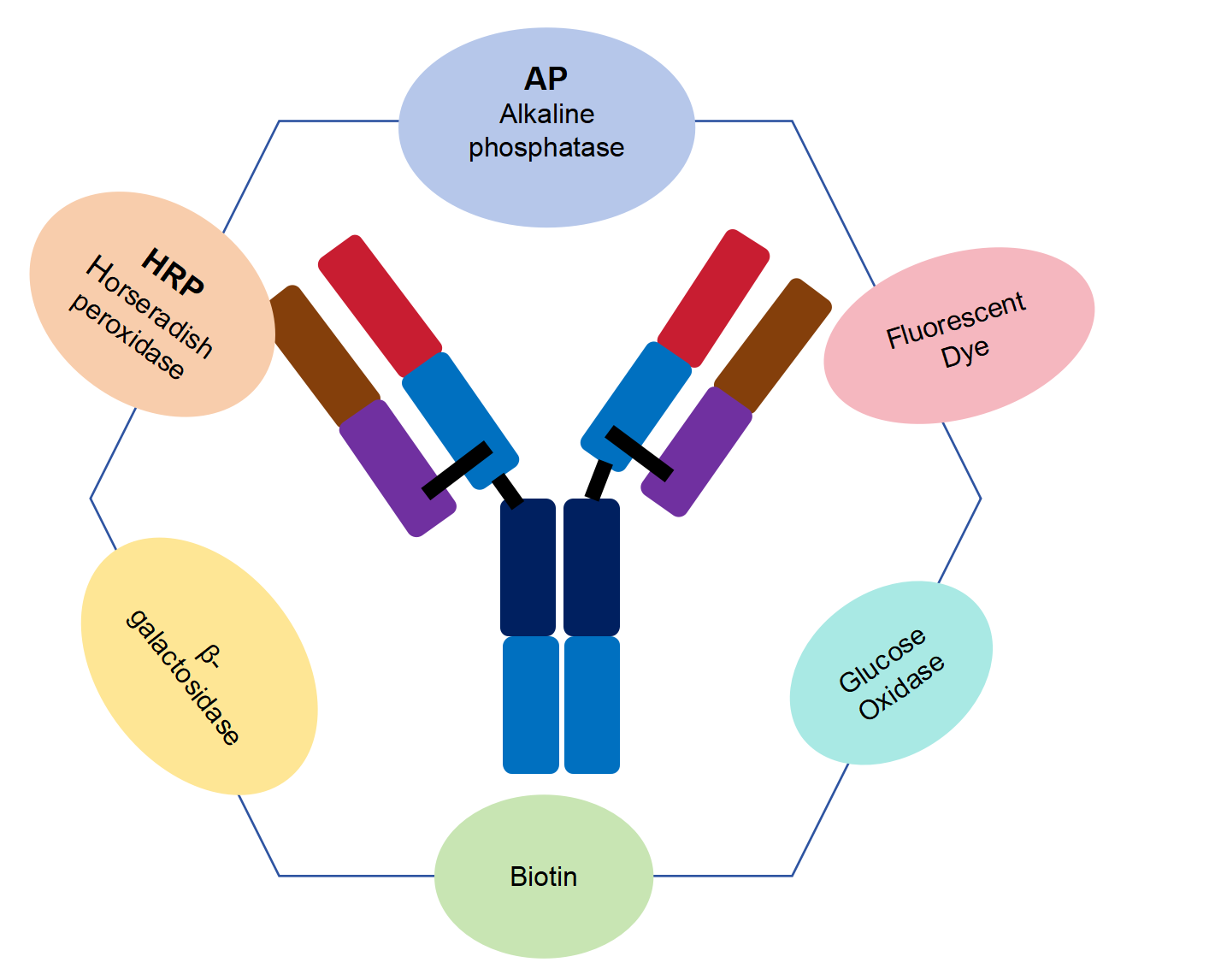2018-11-06 Hits(427)
Documents Antibody Labeling Service Inquiry Form()
KMD Bioscience offers a variety of high-quality antibody conjugation services to meet your specific needs. Antibodies or Proteins can both be cross-linked using different reporter enzymes such as horseradish phosphatase and alkaline phosphatase (AP). This allows for maximum retention of labeled antibody activity and chemical coupling. Enzyme-labeled proteins and antibodies can be used in ELISA (immunoblotting), immunoblotting, in situ fusion, cell, and histochemical assays.
KMD Bioscience is focused on R&D, and innovation and has developed a strategy and calculation scheme that ensures the enzyme/protein coupling ratio is close to 1:1 to maximize activity. Quality control tests will be conducted on antibodies before enzyme-conjugated labeling begins. Antibodies are unique and must be treated with caution. The marking process usually takes between one and two weeks. You can request custom-tailored services to label your protein or antibody according to your needs. We also provide antibody-drug conjugate service.

Fig: Optional label for antibody conjugation services
The Antibody Labeling Services
--AP (alkaline phosphatase) Labeling Service
Alkaline phosphatase (AP) is a hydrolase commonly used for antibody labeling. It catalyzes the formation of a yellow substance on p-nitrophenol. The absorbance is read at a wavelength of 405 nM. Its catalytic efficiency is much lower than that of HRP, the advantage is that the catalytic kinetic reaction is stable and the formed substrate is linearly accumulated.
--HRP (horseradish peroxidase) Labeling Service
HRP-labeled antibodies can be widely used in ELISA, Western Blot, and immunohistochemistry (IHC). In ELISA experiments, HRP-conjugated antibodies are usually used to catalyze blue chemicals in the substrate, which has the advantage of high catalytic efficiency. Usually, the color reaction can be completed in 10-30 minutes (AP: 2-4 hours). We also provide HRP-conjugated secondary antibodies.
--β-galactosidase Labeling Service
Beta-galactosidase (β-galactosidase) is widely used in enzyme reporting systems in molecular biology. Beta-galactosidase-labeled antibodies are commonly used in photometric assays and electrochemical enzyme-multiplied assay techniques (EMATs).
--Biotin Labeling Service
Biotin is also one of the biomolecules commonly used for antibody and protein labeling. It can bind to tetrameric streptavidin with high affinity, including streptavidin and neutravidin, which is widely used in Western Blot, IHC, and ELISA. We can provide Biotin-labeled antibodies.
--Glucose Oxidase Labeling Service
Glucose oxidase (GOx) is derived from Aspergillus niger and has a monomer molecular weight of 80 kDa, which catalyzes glucose to form hydrogen peroxide. The disadvantage is that it is easy to form a dimeric form. Glucose oxidase-labeled conjugates are commonly used in sensor preparation for food industry fermentation process detection and diabetes diagnosis.
--Antibody Fluorescent Dye Marking Service
Unlike enzyme labels, fluorescent dyes are small molecule compounds. Our excellent scientists will follow the most stringent quality control regulations and perform dual monitoring of QC and QA for each marked item. The fluorescent dye includes:
| Fluorescein Derivatives | Rhodamine Derivatives |
| Coumarin Derivatives | BODIPY Derivatives |
| Cascade Blue Derivatives | Lucifer Yellow Derivatives |
| Phycobiliprotein Derivatives | Organometallic Compound |
| FAM series | FITC |
Antibody Conjugation Main Process
After the antibody-enzyme coupling process, the final conjugate needs to be removed, such as reducing agents, which can generally be removed directly by dialysis. However, in specific cases, additional purification techniques such as ultrafiltration, tangential flow (TFF), and gel chromatography are required for conjugate purification. If the cross-linking enzyme molecular weight is close to or greater than the antibody to be labeled, the molecular weight of the protein, affinity chromatography purification, ion exchange column, and hydrophobic column chromatography are most commonly used.
Cross-linking conjugates ultimately require biochemical and biophysical analysis, such as MALDI-top, ESI, LC-MS Fluorescence, SDS-PAGE, IHC, and enzyme kinetic analysis to ensure optimal quality production. Meanwhile, our QC (quality control) and QA (quality assurance) programs enable your products to enjoy dual protection, allowing you to control every aspect of the customized production.
KMD Bioscience can also provide conjugated antibody products, including various markers such as biotinylated antibodies, conjugated monoclonal antibodies, conjugated polyclonal antibodies, HRP conjugated antibodies, HRP conjugated secondary antibodies, and other in-stock products. We welcome inquiries from scientists around the world, and we will provide you with product manuals and strict quality inspection documents.
How to Order?

If you have any questions regarding our services or products, please feel free to contact us by E-mail: [email protected] or Tel: +86-400-621-6806